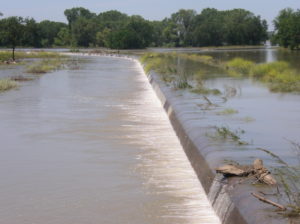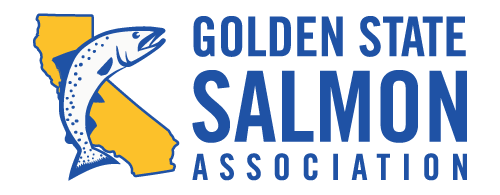
The Yolo Bypass is probably the largest semi-intact floodplain remaining in the Central Valley. Although much of it is farmed, it’s intentionally flooded when the Sacramento River is running high to divert floodwaters from the City of Sacramento. When flooded, it provides ideal rearing conditions for baby salmon with plentiful food, submerged vegetation that provides refuge from predators, and a southern exit to the bay, safely west of the pull of the Delta diversion pumps.
The Fremont Weir is basically a low elevation concrete dam at the upstream end of the bypass that regulates when the river spills over into the bypass. State and Federal water agencies are required by the 2009 NMFS salmon biological opinion to lower or notch the Fremont Weir to allow the Sacramento River to overtop into the bypass more often to provide more frequent access for baby salmon.
In May of 2018 a small notch was cut into Fremont Weir to allow for the exit of some adult fish from the bypass. Since then a second, larger notching alternative has been selected and work to construct this will hopefully follow soon.
The project also calls for making various other modifications inside the bypass so that the adult fish returning from the Bay into the Bypass will have a path all the way back into the Sacramento River. Currently there’s a fish trap to capture stray adult salmon inside the bypass and allow their removal back to the Sacramento River.
In late 2017 the state Resources Agency published a draft plan to comply with the greater access requirement. In May of 2018 a small notch was cut into Fremont Weir to get things started. Since then a larger notching alternatives has been selected and work to construct this will hopefully follow soon.
